(Illustration: “Forthwith upright he rears from off the pool”,
by Gustave Doré – © University at Buffalo Libraries)
“Paradise Lost” was the first commercial Amiga game designed and developed in Turkey. It was proudly produced by Ahmet Ergen and me, and released on 4 floppy disks in December, 1991.
Though it was a phenomenal technical achievement in terms of setting the bar for game development in Turkey by the early 1990s, thanks to problematic distribution channel and no media support, it was a commercial failure. Only a few hundred copies were sold! And, as far as I know, none of them have survived. It is a game that is no longer known to exist in any private collections or public archives. Long lost and forgotten… Until now!
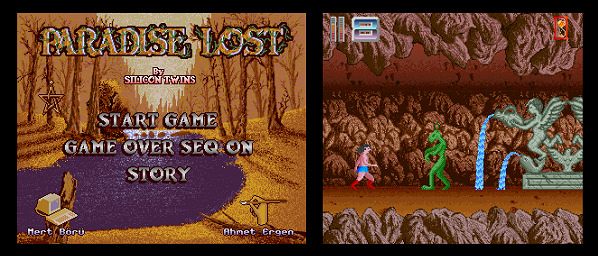
Rebirth of an Amiga game
Mostly because of very limited number of copies sold, I have never seen a fully restored .ADF image set of “Paradise Lost” on the Internet. Most people I have met at demo parties were even unaware of the game, while some insisted that it didn’t even exist at all.
“Paradise Lost” was released on 4 floppy disks.
A few years ago, I was surprised when I came across “Paradise Lost” in an upcoming folder of a retro-focused FTP server. Unfortunately, it was a partial recovery. Only the first 2 disks were available. Because of some damaged tracks, it was unplayable. And the other 2 disks were completely missing. So, I decided to take a chance on my 3.5″ floppy archives, which were left in the dust for more than 20 years! Since I no longer had my customized Amiga 500, I asked one of my cronies if he could lend me his Amiga. He said “OK”, unwillingly. – Thanks Altugo! 😉
When I turned the mighty Amiga on, I have noticed that none of my floppies were working! For a moment, I thought my floppy disks were completely dead. Meticulous tests proved that the floppy drive was dead, actually. After replacing it with a brand new one, I have noticed that almost all of my floppies were in superb condition. Within a week, I have managed to restore more than 50 floppies, including “Paradise Lost”, and my other projects (demos, intros, etc.)
Thanks to retro-dedicated friends at abime.net, “Paradise Lost” is safe and secure now. I have provided the original 4 floppy disks, as well as a trainer copy for an easier gameplay with unlimited lives. You may download both versions, and enjoy the game!
> “Paradise Lost” info & download links on Hall of Light
[ I guess, you want to hear more about this long-lost Amiga game 😉 Let’s move on to “behind-the-scene” details then… ]
. . . .
This is the official story of “Paradise Lost”
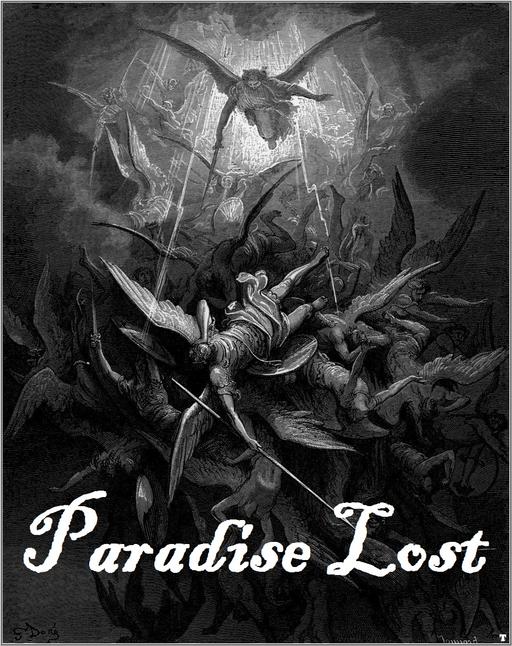
By the late 80s in Turkey, video game development was widely considered as an exercise in futility, simply because there was no money in it. Piracy was everywhere! Original games were used as master copies to make illegal duplicates.
As a natural outcome of this craze, there were no Turkish game development companies at all.
Before “Paradise Lost”, only one commercial game was officially released in Turkey; “Keloglan” (1988). It was a text-based adventure game written with Graphic Adventure Creator (GAC) for Sinclair ZX Spectrum and Commodore 64.
Although Ahmet Ergen did the artwork for “Keloglan”, he was looking forward to do something bigger and better
Ahmet Ergen was the talented pixel-artist who did the gfx stuff for “Keloglan”. He was a very good friend of mine, and we were both living in the same district, fortunately. Before the mighty Amiga 500, we were both addicted to Sinclair ZX Spectrum. We used to chat forever about the humble Speccy, and we were seriously interested in game development. Although he did the artwork for “Keloglan”, he was looking forward to do something bigger and better. He was already aware of the things that I did on Amstrad CPC for the European video game development market. When I showed him some of the things that I’ve programmed on Amiga, he said “Let me do the gfx, and you do the rest”. All of a sudden, Silicon Twins was founded. It was just two of us…
Top–notch inspiration
“The Shadow of the Beast” (1989) was more than an influence. Technically speaking, it was the holy grail of game design and development at the time it was released.
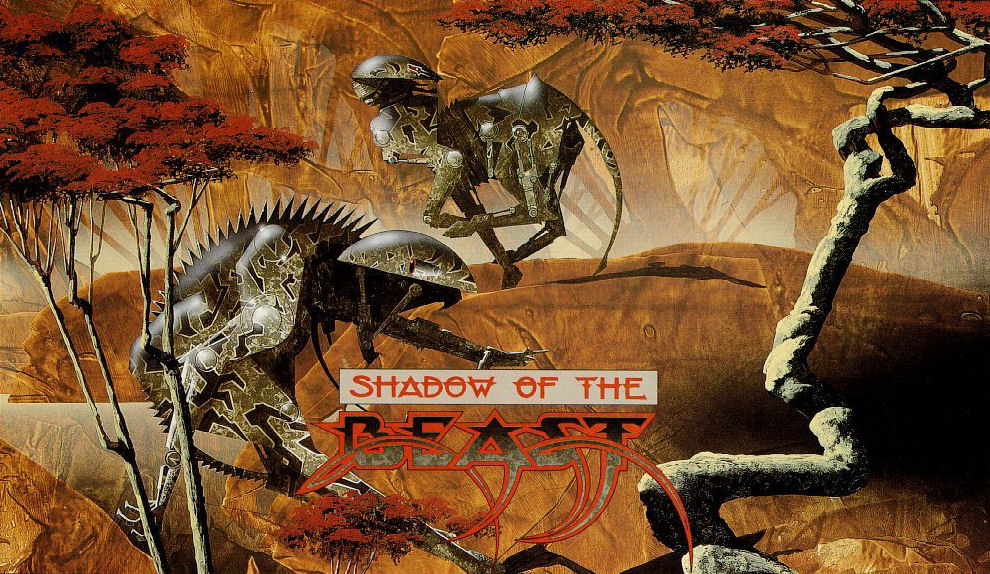
The balance between gameplay and music was stunning. The game was able to show off each and every technical feature of Amiga in a very artistic way, like some other Psygnosis releases.
“Due to popular trend, we knew that we had to do a 2D parallax scrolling platform game”
We had a similar game design in mind. Due to popular trend, we knew that we had to do a 2D parallax scrolling platform game. During those days, I was writing Amiga intros/demos by abusing sprite and blitter hardware registers, but that experience was not enough for writing a classy game. I was looking forward to programming Amiga’s advanced custom chips and learning more serious stuff, such as interrupt registers ($dff01c, $dff01e), collision control registers ($dff00e, $dff098), DMA disk registers ($dff020-$dff026), etc.
By the late 80s in Turkey, it was very difficult to find imported engineering/programming books. We were lucky enough to grab a xerox copy of Amiga ROM Kernel Reference Manual – Includes and Autodocs, despite many missing pages! From my point of view, C based firmware calls mentioned in the book weren’t satisfactory at all. Based on my experience in Z80 assembly language programming, I knew that everything had to be done in low-level for squeezing out every last bit of performance from the Amiga 500.
So, I decided to take the proven route to wisdom: reverse engineering! – Contrary to popular belief, it is NOT a way of copying/duplicating things. Using reverse engineering as a competitive technical intelligence method is a great way of learning new things, which is similar to what scientists do by observing mother nature.
[ Believe it or not, a piece of code can offer more hidden gems than a technical reference book. ]
Time to switch on
The official development started in August, 1990. I cracked “The Shadow of the Beast” within a few days. After disassembling and labeling the code, it took almost 2 weeks to understand what was going on under the hood. Finally, I have figured out the DMA driven clever-timing-tricks, and started writing a simple proof of concept demo –from scratch- using Seka Assembler. After über-optimizing my copper lists and DMA routines, the core code of the demo was less than a kilobyte.
It was a very hot day when I demoed the proof of concept to Ahmet at Byte Computer. It was nothing more than a silky smooth parallax scroll demo with some prototype graphics! He loved it, and immediately moved on to level design.
Words of literary inspiration
During the late 80s, I was very interested in epic poetry. John Milton’s “Paradise Lost” and Dante’s “Divine Comedy” were my bedside books. An epic poem adaptation sounded like a clever idea. I just wanted to do something similar to what Ocean did with film licenses.
[ I still believe, literature is more inspirational than movies for game design. A road not taken… ]
Game Design
Ahmet polished the original idea with clever level design. In addition to his 2D parallax scrolling levels, we came up with strange ideas like a pseudo-3D road scene, a serpent living in a well, as well as adding realtime calculated 3D objects to a 2D scene!
In those days, 2D games were strictly 2D, just as expected! Before coding “Paradise Lost”, I was working on a simple 3D engine, so I thought it might be an interesting idea to come up with hybrid objects (sprite + 3D filled vectors) in a 2D parallax world. It was an experimental approach. And, it worked!
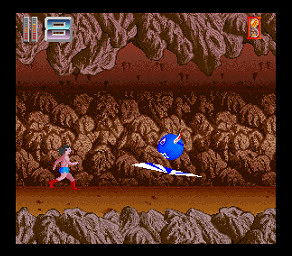
Pros and Cons, honestly
Ahmet did all the artwork on Deluxe Paint. It was 100% pixel art. He was a multi-talented artist. He used to start with drawing wonderful charcoal sketches on paper, and then move on to Deluxe Paint for the final detailed pixel art. Although it was a painstaking procedure, he had his own practical ways of accelerating things.
The thing he did with the pseudo-3D scrolling road level was amazing! In order to create a perspective corrected ground animation, he was pushing the limits of Deluxe Paint. I remember him well, working on it for long days and nights.
Besides the original artwork, he also ripped a lof of graphics from “The Shadow of the Beast” and many other games, for reference purpose only! He analyzed these sprites pixel-by-pixel in Deluxe Paint. It was a great way of learning how things were done. A derivative of reverse engineering for the artists 😉
“The downside of this method is, if you get carried away with it, you end up with something very similar to the original.”
The downside of this method is, if you get carried away with it, you end up with something very similar to the original. And, that is exactly what happened with our game! The forest level was soooooo similar to “The Shadow of the Beast” that, it really didn’t matter how many original ideas we came up with. It looked lame, and to add insult to injury, intention to use the well picture ripped from “The Shadow of the Beast” as a reference, ended up with a modified version of the original!
There are times in life when we have to make choices and we can never go back to that time and change our choice. For us, this was one of them! – A lesson well learned.
Coding
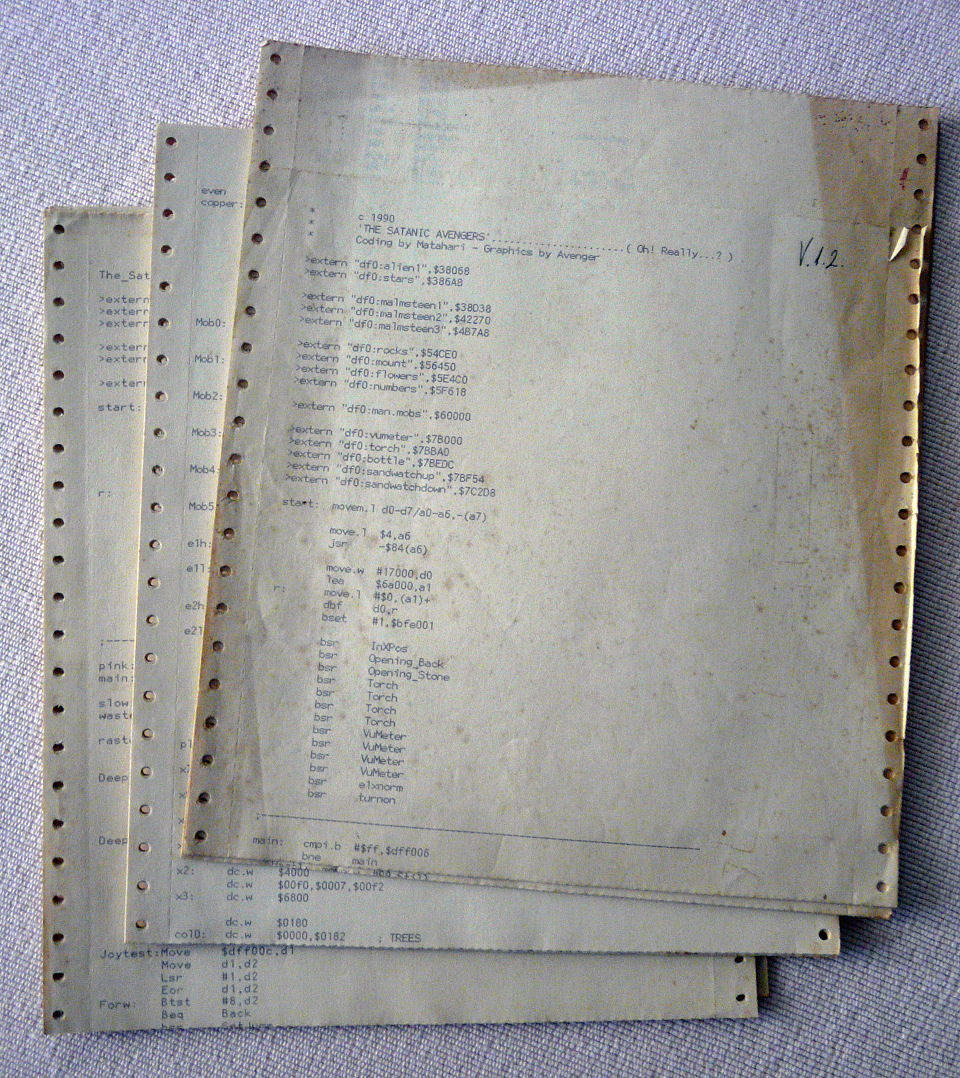
I coded the game in Motorola 68000 assembly language. No system calls, no C libraries… Everything written in low-level for maximum speed/size optimization. I was very comfortable with Seka Assembler, and it was more than enough for writing a commercial game. As the code became more and more complicated, it was very kind of Ahmet printing the source codes using his Epson dot-matrix printer. Thanks to these printouts, I had the luxury of fine tuning codes at wherever I wanted.
Technically speaking, the first level was the most complicated of all. 30+ layers of parallax scroll on a dual playfield screen with 3D filled vector creatures, not mentioning the neverending copper lists for usual sprites and colour maps, it was quite a challenging task. I had to take care of precise timing issues for the sake of a smooth 50Hz scroll.
The power of 8-bit digital audio
I was also responsible from the audio content. For most of the sound effects, I used the standard CD libraries that came with Akai S950 professional sampler. I was so much interested in music production that I had a huge stock of commercial sample libraries on 3.5″ floppies, in addition to an enormous music CD archive. I knew that most game development companies relied on these sample libraries, so I felt truly confident in using them. Although it was a risky business at the cost of sounding similar to other games, that was the common case for most game developers.
Creating musical ideas/content for the game was more challenging than the sound FX stuff. For almost all songs, I tried to create an “atmosphere” that supported the tension of the gameplay. For example, the encounter with the hybrid (sprite + 3D filled vector) creature in the first level triggers a bombastic war drums sequence. It is an aural warning, telling you that something weird is going on there!
[ Today, this technique is widely used in AAA games, such as “Tomb Raider”, “Uncharted 3”, “BioShock Infinite”, etc. ]
The “War Drums” track was loosely based on “Heaven & Hell – Part II”, an electronic instrumental song written by Vangelis. I sampled and looped some drums from this song using Aegis AudioMaster III, and added additional layers of atmospheric samples from my sample libraries for creating an original remix. I used similar tricks on the other tracks as well.
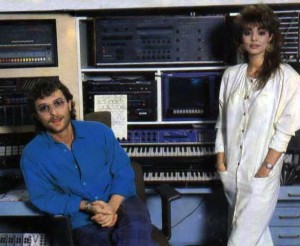
I composed & arranged most of the tracks with very popular references in mind. For each song, I wanted to create the sound/style of a specific artist that matches the visual content in the game. For example, for the main menu music, I wanted to create a mysterious ambient mood by using the same instruments that were used on the first Enigma album. I knew that Michael Cretu had used PPG Wave 2.2 synthesizer, Roland D-50 synthesizer, and E-mu Emulator II sampler for most of the sounds on “Back to the Rivers of Belief – Part 1: Way to Eternity”, so I decided to create a similar style by using sample libraries of these instruments. And, it worked like a charm!
[ During the meeting at Core Design in Derby (UK), we heard a compliment that melted our hearts. After demoing the game, we were told that they wished they had such a good example of game audio implementation & integration on any of their releases. – Well, that was worth a million! ]
Final touch
It took 14 months to complete the game. As we were both students, we had a very busy schedule. Under normal conditions, it should have taken roughly 6 months.
With international market in mind, we decided to release “Paradise Lost” only in English. We were heavily criticised for the lack of a Turkish version. However, the number of sales later proved that it wasn’t necessary at all. 😉
Fasten your seat belts!
In December 1991, we planned a two week trip to UK to see what we can do there, and visited a few companies/publishers that we had in mind.
We were in touch with Elite, U.S. Gold, Gremlin Graphics, Hewson Consultants, Core Design, and a few more. (Ocean wasn’t on the list, with respect to my freelance relationship with them.) With a busy schedule, we had meetings one after another. We gathered enormous amount of market information, and heard behind-the-scene stories, thanks to these meetings. – Just another story 😉
Remarkably, two of the publishers (Elite and Gremlin Graphics) that we’ve met in UK, hated the idea of blending different genres on a single game. For a publishing deal, we were asked to remove pseudo-3D road level and the serpent level entirely, to bring down the floppy costs. For the sake of better gameplay experience, continuity, and fun factor, we kindly rejected their offer.
Core Design was very interested in “Paradise Lost”, and asked if we could leave a copy for them. After a few days, we received a kind phone call indicating that they were no more interested in the game.
The straw that broke the camel’s back
When we came back to Turkey, we decided to talk with major local shops/companies. (Please allow me to remind you that these were pirates selling illegal copies of commercial games for a few bucks!) We were aware of the fact that there was no money in it. We just wanted to use their distribution channel at what the matter costs. In order to show the potential of game development business in Turkey, we had to make sure that it was commercially released, not for free!
[ In one of these meetings, we were asked to cut the game down to 2 disks, even before demoing it. That was insulting! ]
After various bargaining sessions and arguable support from local illegal-game-selling-shop owners that we personally knew, the game was self-published and commercially released in December, 1991. It was only available in a few shops in Istanbul. 4 floppy disks, plus a few xerox copies (that we have not approved!) were packed into a nylon bag. No box at all! And, despite our severe objections, the retail price was a whopping $14.
[ Try to imagine yourself bargaining with software pirates that are complaining about disk & packing costs! This is simply why we decided to keep the three question marks (???) on the title sequence as a rebuff to the local shops & companies who refused to publish the game properly, due to a thin excuse of floppy + packing cost! They don’t deserve the right to put their logo on any game as a publisher. ]
Right after the release, I started visiting video game magazines in Istanbul, one after another… One of the chief editors -that my father personally knew- told me that there was no (and will never be a) market for video games. He advised me to get a haircut and get a real job, via fatherly tone. – [Respect!]
So, I decided to visit the second magazine on my very-short-contact-list. When I met the 3-piece-suit guy who owned the magazine, I thought that was something! The moment I proudly told him about “Paradise Lost”, he said “Yeah, I’ve heard of those two young developers. Talented guys from Germany! So, who the hell are you?!” I said, “Sir, I am one of those guys, and I live in Istanbul, actually”. He stopped for a moment, looked into my eyes and said “Liar! There can be no such talent in this wasteland!!! You must have edited the credits page via HEX editor and put your name on it…” – That was the day I gave up visiting magazines.
A few weeks later, one of my friends told me that the shop owner that we made the publishing deal with, was selling illegal copies of the game for a few bucks, instead of selling the original ones! When I asked the guy about this situation, he told me that only a few hundred legal copies were sold, and in order to make money he had to sell illegal copies as well (!!!). I was shocked… That day, I went crazy and started sharing copies for FREE! I shared as much as I could… – which didn’t even slow down the exploitation.
When I look back now, I can hardly accept the fact that “Paradise Lost” was both sold commercially and distributed illegally, at the same time. What a confusing distribution system we had! Thanks to fraudulent shopkeepers, media refusal, and piracy in Turkey, it couldn’t be worse…
[ For many years, young sceners -unaware of the difficulties we had in those days- insisted on telling that either the game was distributed for free, or not released at all. To cut a long story short, I implicitly kept on saying “Yeah, right! You now it better than the author, huh?!” – Now, you know the whole story guys! ]
Looking beyond the embers of bridges glowing behind us
“Paradise Lost” was an early attempt at indie game development in Turkey. Despite commercial failure, it was an underground success. With the release of “Paradise Lost” as the first commercial Amiga game in Turkey, a few people became aware of the fact that young Turkish sceners had the potential of producing competitive products with international market in mind! We knew that it was going to trigger something big within upcoming years, and it somehow initiated the spirit of indie commercial Amiga game development in Turkey.
Almost a year later, new Amiga games started to pop-up with full colour documentation, packed into deluxe boxes. Most of them were adventure and/or role playing games developed with AMOS. Although these games were produced with local market in mind and technically way behind the bar “Paradise Lost” had set, they were commercially very successful due to proper packing & marketing efforts. They even got major media coverage! It was the beginning of a new era in Turkey…
Back to business
After the release of “Paradise Lost”, I received a letter from Core Design asking me if I could do freelance Amiga-to-Atari ST game conversion for them, peculiarly “Wolfchild”, “Heimdall” and “Jaguar XJ220” in mind. Once again, I was back to the European game development scene. This time, for game conversion business. In a strange way, “Paradise Lost” opened up a new prospect to me. When one door closes, another opens…
[ In June 1992, almost 6 months after the release, Core Design’s interest in “Paradise Lost” revamped! They told me that they were looking forward to publishing a 2 disk abridged version in UK via US Gold. Weird! – Bringing the story full circle back 🙂 ]
Closing words for young Turkish game/software developers
I have witnessed and been involved in the last 30 years of Turkish game and software development scene. Among the 20+ major software projects (games, game engines, business applications, etc.) that I was involved in since 1984, “Paradise Lost” is the only project that I have released in Turkey. Thanks to that, I have learned the necessity of developing and marketing games for the international market, in a very hard way! I am afraid, “Think globally, act locally” doesn’t work in my beloved country. 😉
Follow your dreams, do what ever you want… Just, don’t forget to think and act globally. – The success is out there!
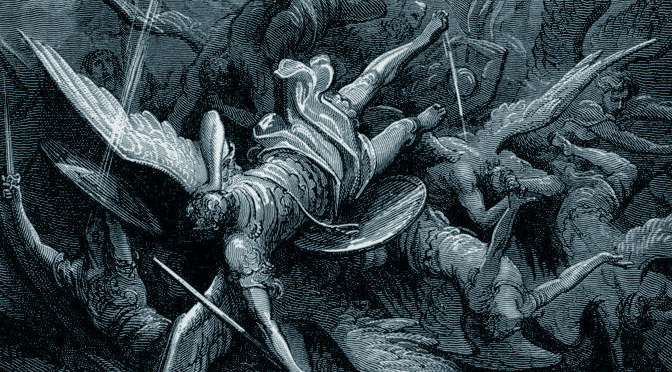
OOO GOD! Finally! I’ve been looking for this game since years. I had no idea that it is available for download! Great work, great project! Thanx for sharing!
vigo/bronx^zombie boys